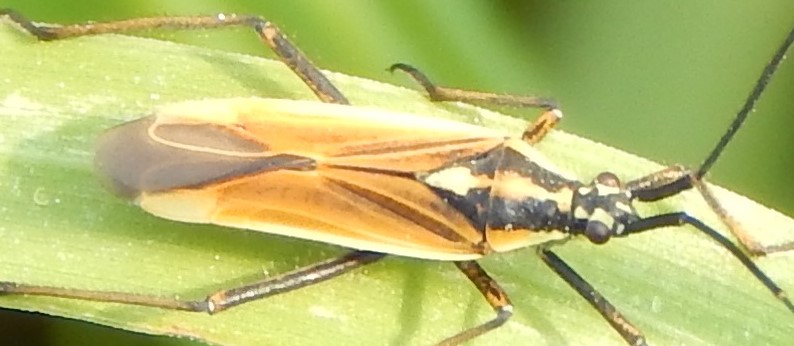
[292] Leptopterna dolobrata, Meadow Plant Bug
Introduction
Leptopterna dolobrata, the Meadow Plant Bug, is one of over two hundred species of mirid bugs found in the UK. I will include a few others from the same family.
(The genus is often mis-spelled as Leptoterna.)
Taxonomy
Kingdom – Animals
Phylum – Arthropods
Class – Insects
Order – Hemiptera (Bugs)
Suborder – Heteroptera
Infraorder – Cimicomorpha
Superfamily – Miroidea
Family – Miridae (Mirid Bugs)
Subfamily – Mirinae
Tribe – Stenodemini
Genus – Leptopterna
Scientific Name – Leptopterna dolobrata
It has the synonym Miris dolobratus.
See text for other mirids.
Name
As for many scientific names, there is no trace of why the original names were given. Leptopterna looks as if it comes from Ancient Greek lepto-pternix meaning thin-stem. Dolobratus is Latin meaning shaped like a mattock (an agricultural tool a bit like a pickaxe.)
Miris, the species that started the series of scientific names, comes from Ancient Greek Myron meaning sweet oil or Perfume. By now it won’t surprise you that the genus comes in the tribe Mirini, within the subfamily Mirinae, within the family Miridae within the superfamily Miroidea.
I have added some notes below on the scientific names of other mirids but there are some that I cannot trace.
Mirid Bugs
We have met [094] Dock Bug, [095] Cinnamon Bug, and [124] Parent Bug, all coming from different infraorders in Hemiptera but Cimicomorpha are similar in appearance. Within this, the main superfamily Miroidea has 15 000 species, most of which are in the family Miridae.
Bugs with the family are called plant bugs, leaf bugs, grass bugs, or often just mirid bugs. They are also called capsid bugs, as the family used to be called Capsidae. There are well over a thousand genera, split into a number of subfamilies and tribes. Most species are plant-eating and many of the well-known species are notorious agricultural pests.
Meadow Plant Bug
Leptoterna dolobrata is found over most of Europe and, as an introduced species, in North America. It is common and widespread in the UK.
It feeds on developing grass seeds and is regarded as a pest in areas of agricultural grass. Its body is black with markings from light yellow to orange. The antennae are long.
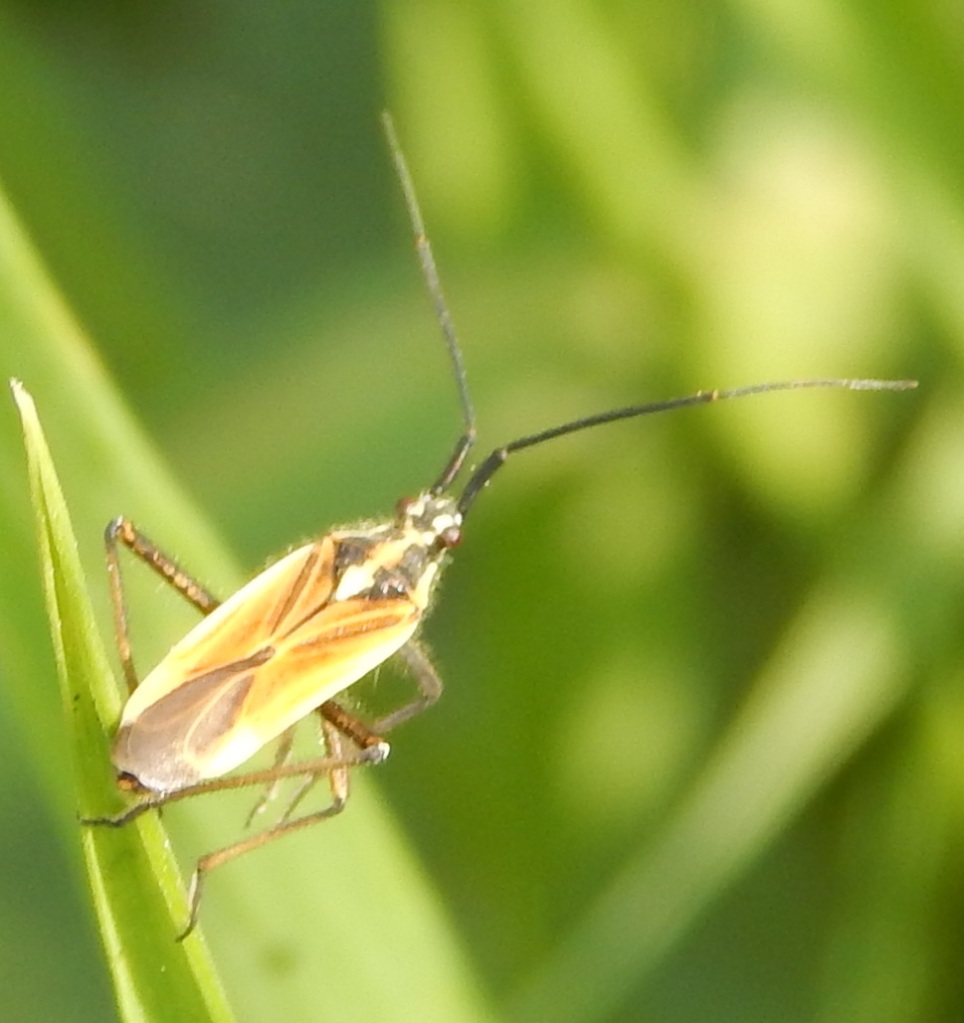
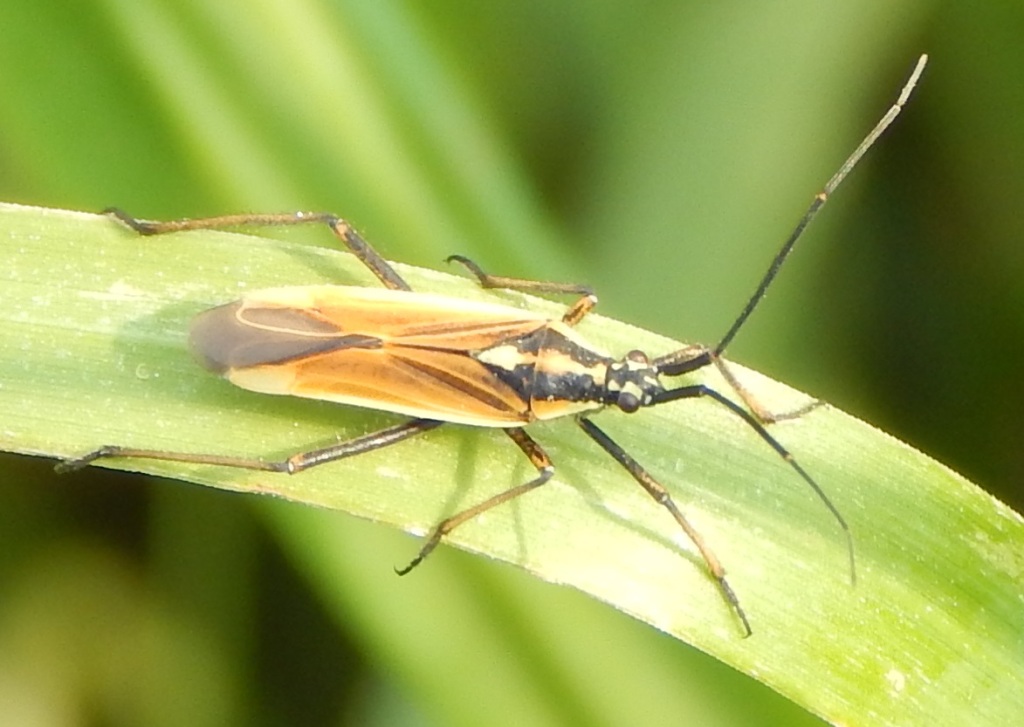
Other Notes
As for all bugs, which are hemimetabolous, you may see some late instars that won’t look enough like the adult stage to be immediately identifiable.
See also
In no particular, here are some other mirid bugs I have seen.
- Phylus coryli
This bug is common over Europe apart from the far South and common in Britain. It feeds on Hazel, Corylus avellana.
[I can’t trace phylus but coryli is a genitive ending, meaning ‘of the hazel.’ Corylus is the Latin for Hazel tree. Avellana comes from the town of Avella in Italy.]
It varies from light brown to black with light coloured legs and antennae.


- Liocoris tripustulatus, Common Nettle Bug
This insect is common over most of Europe and feeds mostly on [353] Nettles. It has a heart shaped mark on its back.
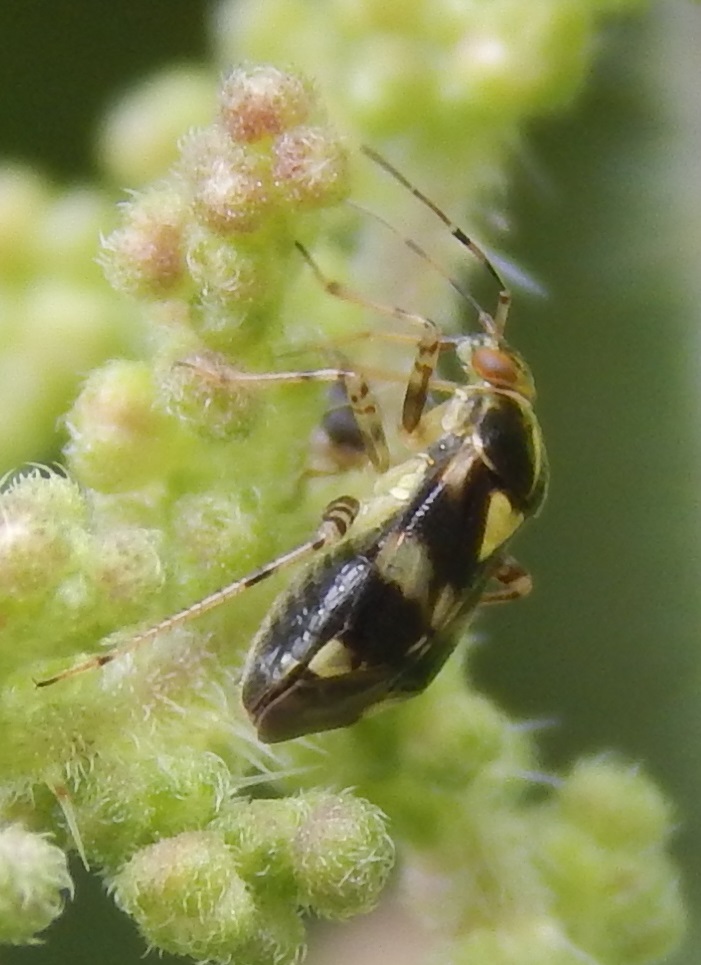
- Plagiognathus arbustorum
This bug is found in most of Europe, parts of Asia and North America. They vary in colour from olive green to almost black. They generally feed on the buds, flowers and developing fruits of a wide variety of plants. [Plagio-gnathus seems to mean steal-jaw. Arbustorum means ‘of the woods.’]
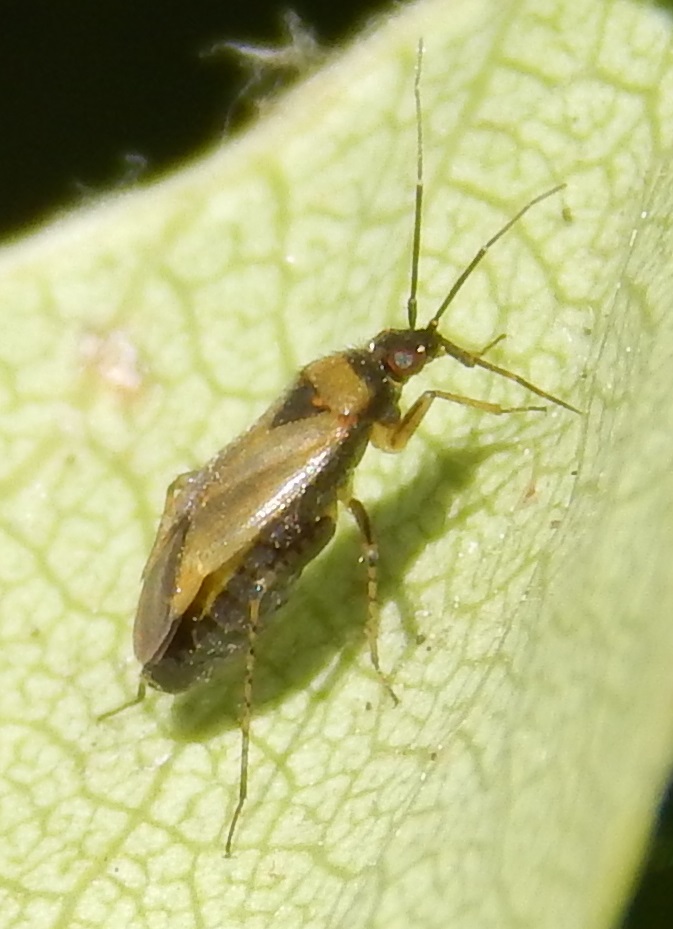
- Grypocoris stysi
This long-horned bug is mostly dark with bright yellow markings. [Grypo-coris seems to mean hook-nosed]

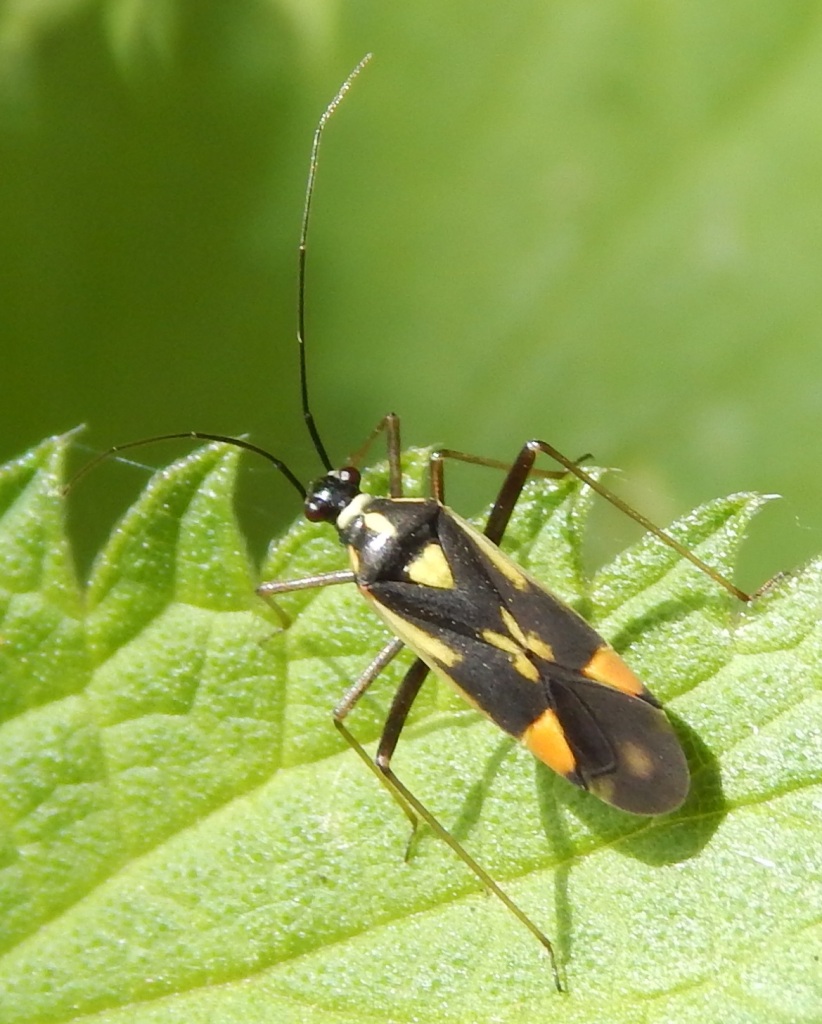
- Deraeocoris flavilinea
This insect is found over much of Europe but was not seen in the UK until 1996. (Flavilinea means yellow-striped.)
The first two pictures below are a larval instar phase.


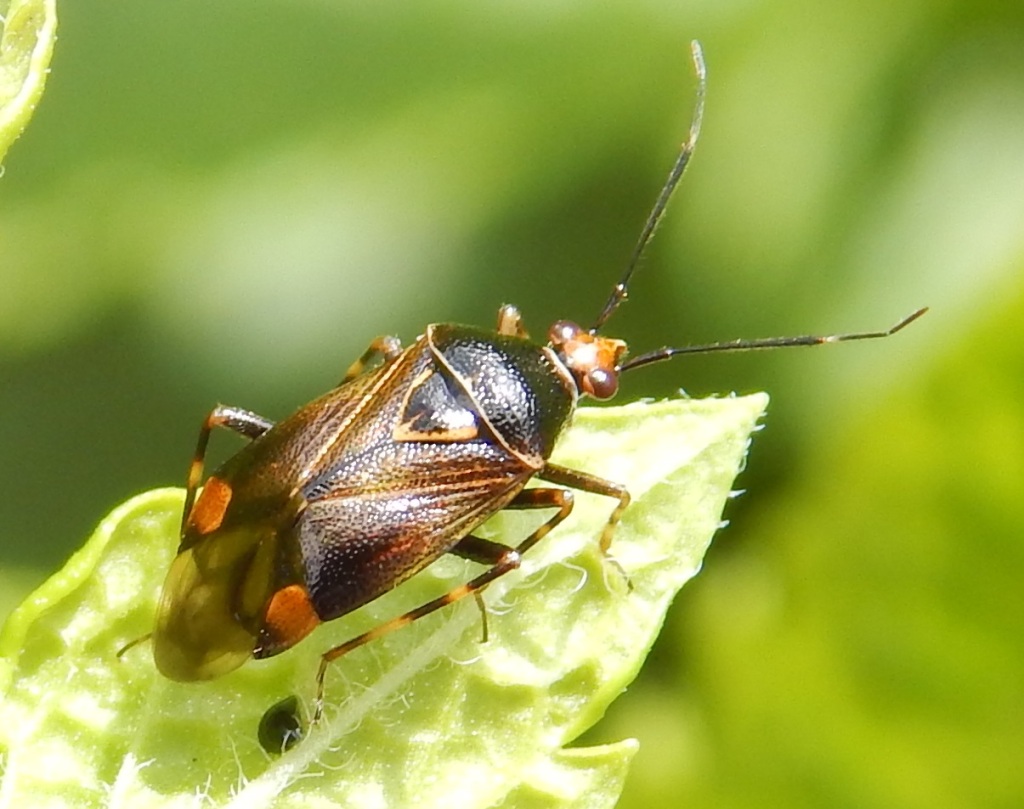
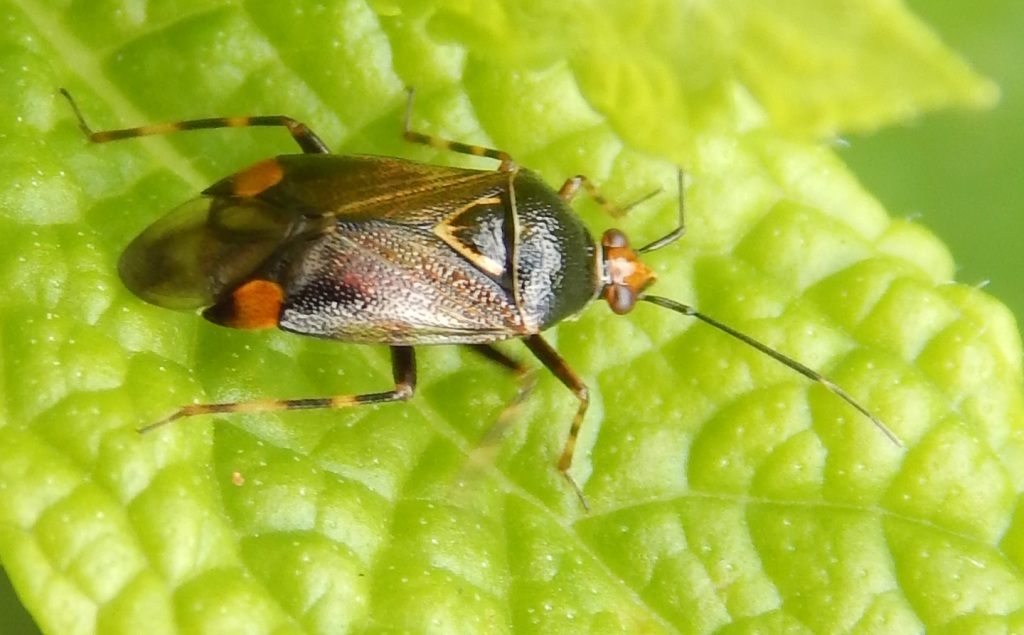
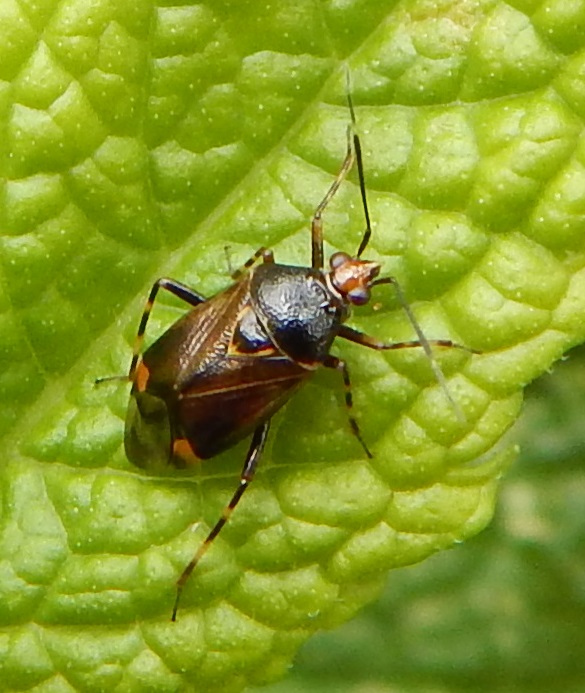
- Closterotomus norvegicus, Potato Capsid Bug
Common throughout Eurasia, this bug feeds on the flowers, buds and unripe fruit of [353] Nettle, [343] Clover, Cannabis, [318] Potatoes, carrots and many other species. Its nymphs are generally green, turning brown as an adult. There are two dark dots behind the head.
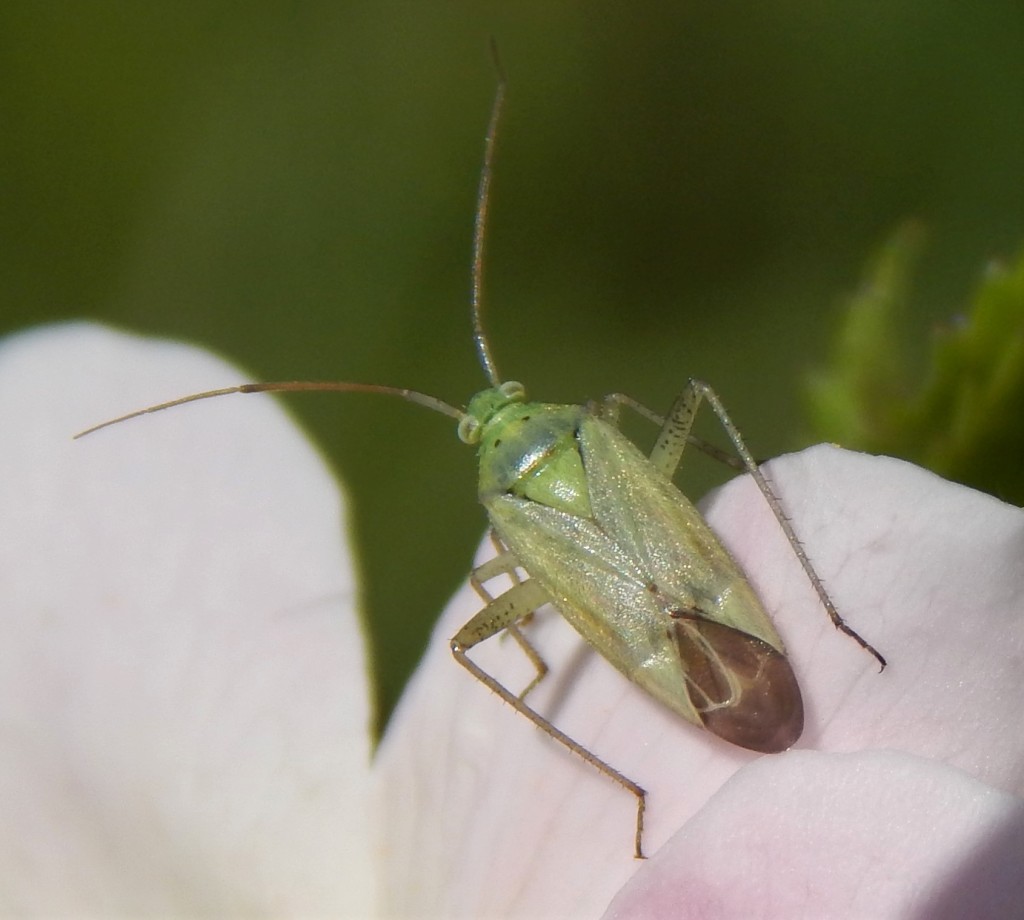
- Heterogaster urticae, Nettle Ground Bug
Common in Eurasia, Africa, New Zealand and North America, this shiny bug is generally found on Nettles.

